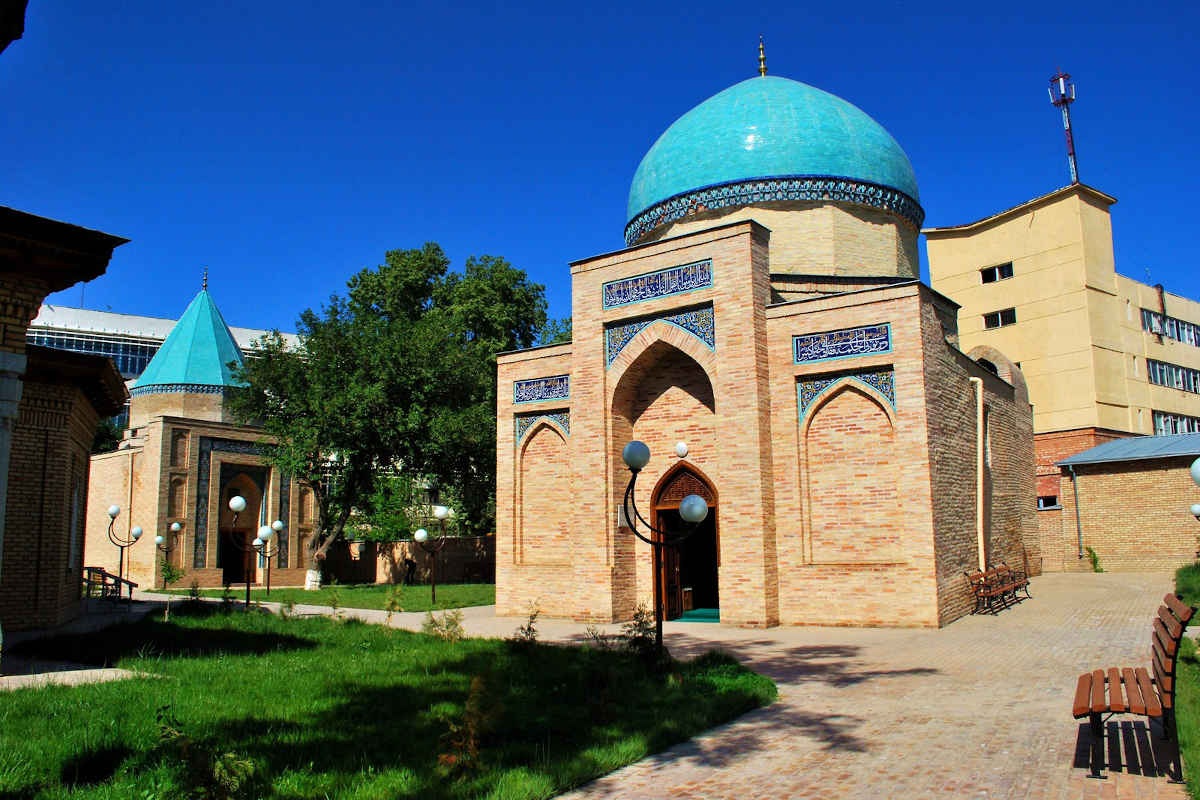Tashkent - Sheikhantahur ensemble
The area of Sheikhantahur Ensemble is located in Tashkent between Abdullah Kadiri and Alisher Navoi streets. The ensemble consists of three mausoleums: the mausoleum of Sheikh Khovendi at-Takhur, the mausoleum of Kaldirgachbai and the mausoleum of Yunus-Khan.

Sheikhantahur was born at the end of the XIIIth century in the family of Khojjah in the mountain village of Bogustan, where the waves of the Charvak reservoir rush today. His father, Sheikh Omar, was a descendant of the second righteous Caliph Omar. People believed that Sheikh Omar was able to work miracles and rule over the elements. It was as if the supreme grace had passed from him to his son as well. The young Sheikhantahur understood the truths of the Sufis. According to biographers, the Tashkent Sufi was particularly impressed by the truth: “High spiritual qualities and knowledge in science are directly proportional to the patience and gentleness of a sage in relation to the rudeness of the ignorant”. The Sheikh lived and preached in Tashkent and died between 1355 and 1360. According to legend, the mausoleum over his grave was built on the initiative of Amir Temur. It is a two-chambered low building under two domes of different heights. The building got its modern appearance after numerous restorations and reconstructions at the beginning of the 19th century. Inside there are three tombstones, one under the large dome and two under the small dome. The mausoleum preserves the only one of the forty-eight Saurus of Iskander planted by Alexander the Great. The petrified conifer is located inside the mausoleum right next to the majestic tombstone of the Sheikh.
It is worth noting that the Sheikhantahur family included many prominent residents of Tashkent, including the famous preacher of the Temurid period, Ubaidullah Hodja Akhror (1404-1490) and an independent ruler of Tashkent in the second half of the XVIII century, Yunus Hoedja. Near the mausoleum of Sheikhantahur, another mausoleum survived until our days – Mazar Kaldyrgach-bay. This architectural monument of the XV century is clearly distinguished from other buildings of the complex by the characteristic shape of a pyramidal dome and reminds of mazars of the Kazakh steppes. In fact, under the vaults of this mausoleum rest the remains of Tole-bai, a Kazakh statesman of Kazakh origin. Together with the people of Tashkent, Tole-bai succeeded in driving the Changar-Malmyk invader out of Central Asia. Tole-bai appointed as his confidant in Tashkent Yunus-khojah, the Chokim of Shaikhantakhur, who became an independent ruler of the state of Tashkent after his death.
Another preserved mausoleum of the complex from the late XV. Century is the mausoleum of Yunus-khan, a Mogol poet and warrior, the maternal grandfather of Bobur. The building has been restored several times, it is a rare type of khanaka in T-shape with a high revak on top of the façade.
Today, the Sheikhantahur ensemble in Tashkent continues to retain its value as an outstanding architectural and pilgrimage monument. The beauty and scenic beauty of this corner of the city has inspired poets and painters.
